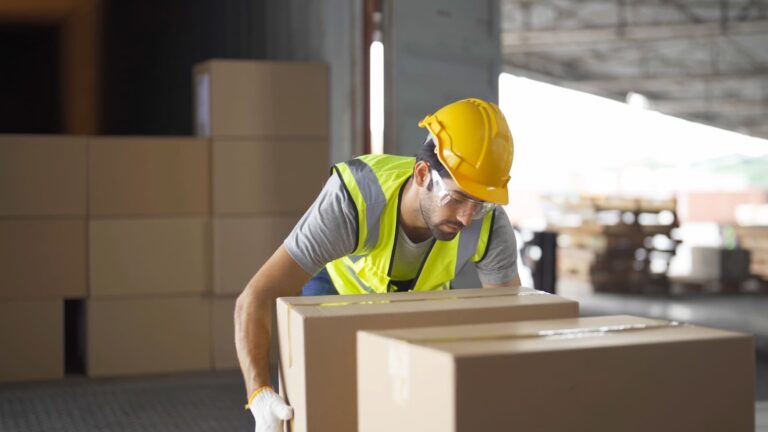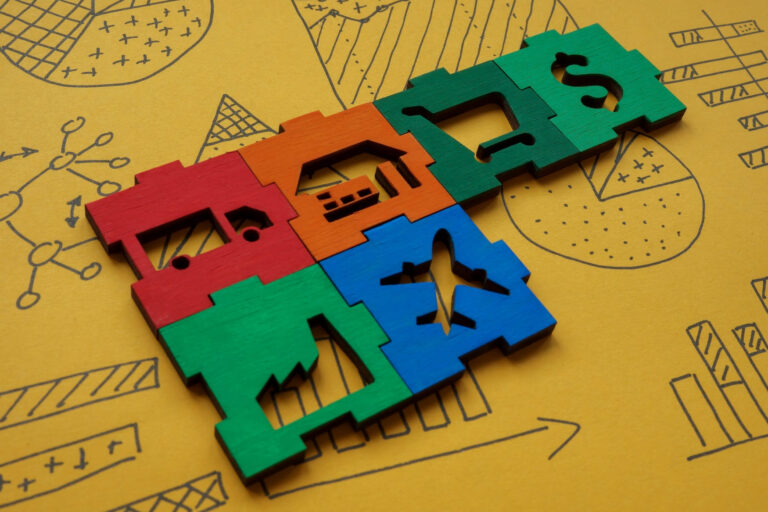Types of Logistics Services – A Complete Guide for Modern Businesses

Efficient logistics is the backbone of today’s economy. Whether you operate an e‑commerce shop shipping parcels worldwide or a manufacturer moving raw materials across borders, the way you manage logistics services directly influences costs, customer satisfaction and growth. This guide demystifies the different types of logistics services and shows you how to select the right partners to keep your supply chain running smoothly.
What Are Logistics Services?
At its core, a logistics service coordinates the movement and storage of goods so they arrive at the right product, right customer, right price, right quantity, right condition, right time and right place. In practice, that means a provider can handle anything from warehousing and transportation to customs clearance and returns. According to industry sources, logistics services often include order fulfillment, inventory management, returns processing, packaging design, tracking/monitoring and customs clearance. By outsourcing these processes, businesses focus on their core competencies while experts manage the physical flow of products.
Key Benefits of Using Logistics Service Providers
Partnering with an experienced logistics service provider (LSP) delivers a range of benefits:
- Cost efficiency: Moving freight through established networks often lowers transportation and storage costs. 3PL providers also allow you to pay only for the capacity you use.
- Professional expertise: LSPs understand complex regulations, customs procedures and best practices across modes of transport.
- Scalability and flexibility: Providers offer the ability to scale up during peak periods and scale down during slow seasons.
- Technology integration: Advanced tracking systems, route optimization software and warehouse management tools provide real‑time visibility and analytics.
- Improved customer satisfaction: Faster deliveries and accurate order processing lead to happier customers.
Types of Logistics Services
Understanding the different service categories helps you choose the right mix for your operation. Many businesses use several services in tandem to build an efficient end‑to‑end supply chain.
Transportation and Logistics Services
Transportation is the core of any supply chain. Goods move via road, rail, sea or air, often using a combination of modes. Large shipments may travel on freight trucks or container ships, while smaller orders are handled by courier services. Freight shipping is well suited to bulky, palletised loads, whereas courier shipping is designed for small parcels and time‑critical deliveries. A Transportation Management System (TMS) helps plan, execute and optimize these movements, providing route optimization, rate comparison and real‑time tracking. Professional transport services reduce transit times, improve visibility and optimize costs.
Examples & best uses
- Road and rail freight: Ideal for heavy or bulky loads over medium to long distances. Combine Less‑than‑Truckload (LTL) and Full Truckload (FTL) services based on shipment size.
- Air freight: Fastest option for high‑value or time‑sensitive goods.
- Sea freight: Most economical for large international shipments.
- Courier shipping: Perfect for local deliveries and small parcels requiring next‑day or same‑day service; relies on route optimization and proof‑of‑delivery technology.
Warehousing and Distribution Services
Warehousing goes beyond storing goods on shelves. Modern facilities offer climate‑controlled storage, automated inventory management, cross‑docking and regional distribution hubs. A strategic warehouse location shortens delivery times and reduces transport costs. Inventory visibility – always knowing what’s in stock and where – is critical for fulfilling orders quickly. Leading providers integrate warehouse management systems (WMS) with TMS to synchronise inbound and outbound logistics.
Fulfillment and Order Management
Order fulfillment services handle every step from receiving inventory to delivering finished packages. Key processes include inventory storage, picking and packing, shipping and returns management. Effective fulfillment minimizes order errors and speeds up delivery. E‑commerce businesses often rely on third‑party fulfillment to scale quickly without investing in their own warehouses.
Inventory Management Services
Accurate inventory management keeps your supply chain in sync. Providers use real‑time systems to track stock across multiple locations, forecast demand and trigger replenishment automatically. Poor inventory control leads to stockouts, overstocking and delayed fulfillment. Integrating inventory data with transport software and sales platforms ensures customers see only available stock.
Reverse Logistics Solutions
Not all logistics involves delivering goods to customers; returns and recycling matter too. Reverse logistics covers returns processing, repair and refurbishment, recycling and disposal. Managing returns efficiently reduces waste, recovers value from returned goods and improves customer loyalty.
Specialized Logistics Services
Certain products require specialized handling. Examples include cold chain logistics for perishables like food and pharmaceuticals, hazardous materials transport that meets strict safety standards, project logistics for oversized or heavy equipment, and return processing, cargo handling, port services, customs clearance and tracking. Companies can pick and choose the services they need – for example, pairing warehousing with packaging services or adding customs brokerage for international shipments.
Third‑Party and Fourth‑Party Logistics (3PL vs 4PL)
Third‑party logistics (3PL) providers act as a link between producers and customers, managing warehousing, transportation and sometimes order fulfillment. Businesses appreciate 3PLs because they provide cost control, flexibility and logistics expertise. Fourth‑party logistics (4PL) providers are more like consultants; they design and coordinate the entire supply chain and may contract several 3PLs and carriers to deliver a complete solution. Choosing between 3PL and 4PL depends on how much control you want and whether you need a single provider or a strategic partner overseeing multiple vendors.
Technology & Digital Logistics Tools
Software is the glue that ties logistics operations together. Transportation Management Systems (TMS) and Warehouse Management Systems (WMS) help plan routes, compare carrier rates, automate order processing and provide real‑time tracking. Today’s providers also use AI‑powered forecasting, route optimization and smart analytics to predict demand and reduce empty miles. Investing in modern logistics software enhances visibility, reduces errors and supports data‑driven decisions.
How to Choose the Right Logistics Services
Selecting the right mix of services starts with understanding your business goals. Consider the following factors:
- Type of goods: Are you shipping perishable, hazardous or oversized products? Certain items require specialized handling and compliance.
- Delivery speed: Do you need same‑day, next‑day or standard shipping? Balancing cost and speed helps determine whether to choose freight, courier or air services.
- Geographic reach: Are your shipments domestic, regional or international? International moves often require freight forwarders and customs brokerage.
- Budget and cost structure: Compare costs across providers, including inbound handling, storage, pick and pack, and technology fees. Pricing models range from per pallet to hourly rates.
- Technology needs: Ensure providers offer TMS/WMS integration, real‑time tracking and reporting. Ask about proof‑of‑delivery capabilities and customer portals.
- Reliability and expertise: Evaluate each provider’s track record, industry certifications, carrier network and customer reviews. Ask how long they have been in business and which industries they specialize in.
Pro tip: Prepare a list of questions for potential providers, such as how they handle returns, what technology they use, whether they support omnichannel fulfillment and whether they offer cost‑saving programs. Choosing the right partner is as much about fit as it is about price.
Emerging Trends in Logistics Services
The logistics industry is evolving quickly. Key trends to watch include:
- Automation and robotics: Automated picking systems, autonomous vehicles and warehouse robots improve efficiency and reduce labour costs.
- AI and data‑driven logistics: Machine‑learning algorithms power demand forecasting and route optimization, lowering fuel consumption and delivery times.
- Sustainable logistics: Electric vehicles, alternative fuels, recyclable packaging and carbon‑offset programs support greener supply chains.
- Omnichannel fulfillment: Integrating online, in‑store and third‑party fulfillment networks enables retailers to meet customers wherever they shop.
- On‑demand warehousing: Flexible storage solutions allow businesses to scale inventory up or down without long‑term contracts.
Conclusion: Build a Resilient Supply Chain
Understanding the types of logistics services available empowers you to design a supply chain that meets your unique goals. From transporting freight and managing inventory to handling returns and navigating customs, today’s logistics providers offer modular solutions that scale with your business. By evaluating factors like product type, delivery speed, geographic reach, budget and technology, you can select a partner that delivers both efficiency and customer satisfaction.
If you’re ready to streamline your logistics operations, consider partnering with a provider that offers warehousing, cross‑docking, drayage, transloading and fulfillment under one roof. The right logistics strategy will save you money, improve service and position your business for sustainable growth.
Frequently Asked Questions (FAQ) – OLIMP Warehousing
Q: What are logistics services?
Logistics services encompass planning, implementing and managing the movement and storage of goods – from sourcing materials to delivering finished products – ensuring they reach the right place at the right time.
Q: What types of logistics services are available?
Core services include transportation (road, rail, sea and air), warehousing and distribution, order fulfillment, inventory management, reverse logistics and specialised services like cold chain, hazardous materials transport, cargo handling and customs clearance.
Q: What does a logistics service provider do?
An LSP manages the supply chain on your behalf, coordinating shipping, storage, inventory, order processing and returns while using technology to optimise routes and provide real‑time tracking.
Q: What is the difference between a 3PL and a 4PL?
A 3PL provides warehousing, transportation and fulfillment services and acts as a link between producers and customers. A 4PL oversees and designs the entire supply chain, contracting multiple 3PLs or carriers as needed.
Q: How do transportation and logistics services differ from warehousing?
Transportation services move goods between locations via road, rail, air or sea, while warehousing involves storing inventory, managing stock levels and preparing orders for dispatch.
Q: What is reverse logistics and why is it important?
Reverse logistics handles the return, refurbishment, recycling and disposal of goods, allowing companies to recover value from returned products, reduce waste and keep customers satisfied.
Q: How do I choose the right logistics service for my business?
Consider your product type, delivery speed, geographic reach, budget, technology requirements and provider reliability. Evaluate multiple providers, compare costs and ask about their technology and industry experience.
Q: Are logistics services expensive?
Costs vary depending on shipment volume, storage requirements and service complexity. Many providers offer pay‑as‑you‑go pricing for inbound handling, storage and pick‑and‑pack. Outsourcing can often be cheaper than building and maintaining your own logistics infrastructure.
You may be interested in

4PL Logistics: The Ultimate Guide to Fourth-Party Logistics
Fourth-party logistics (4PL) refers to hiring a single partner to integrate and manage an entire supply chain. In practice, a 4PL provider acts as a strategic supply chain integrator, overseeing transportation, warehousing, inventory, and fulfillment on behalf of a company. In other words, businesses outsource their full logistics management to one expert who coordinates multiple […]

Finding Reliable Freight Carriers and 3PL Partners: A Down-to-Earth Guide
Struggling to get your products to market on time and on budget? You’re not alone. Small businesses, freight brokers, logistics managers, and e-commerce companies across the U.S. often feel the pain of finding a reliable freight carrier or third-party logistics (3PL) partner. In an industry where trucks move over 70% of U.S. freight , even […]

Top 5 Challenges in Finding a Warehouse & How to Overcome Them
Finding the right warehouse can be stressful and time-consuming, especially with logistics, availability, and cost challenges. Many businesses struggle to find storage and distribution solutions on their own. Here are five common problems and how to solve them. 1. Limited Availability & Location Constraints Businesses often struggle to find warehouse space in strategic locations that […]
Ready to streamline your warehousing needs?
Request a quote today and discover how OLIMP's tailored solutions can optimize your operations